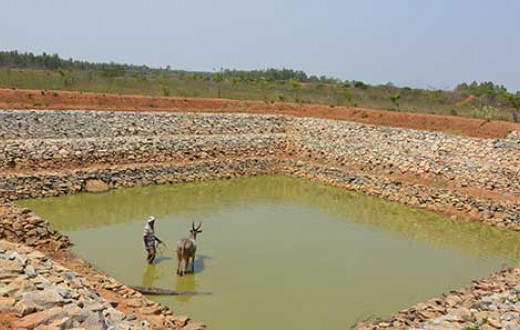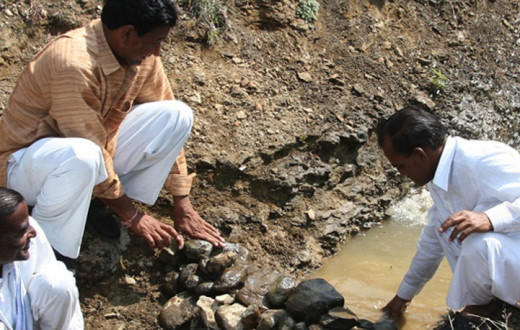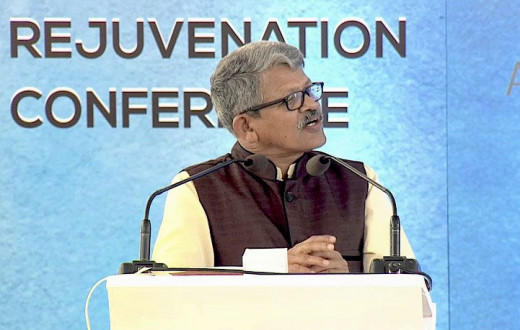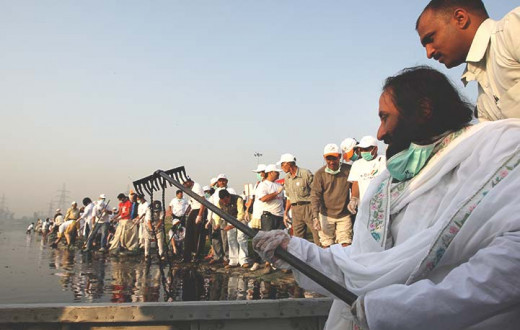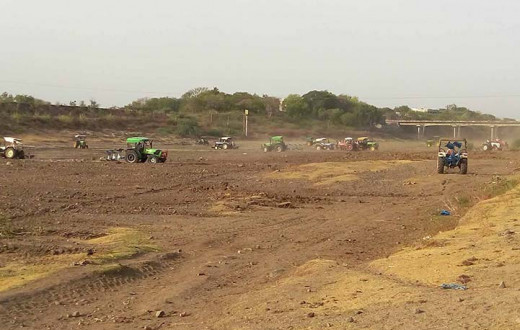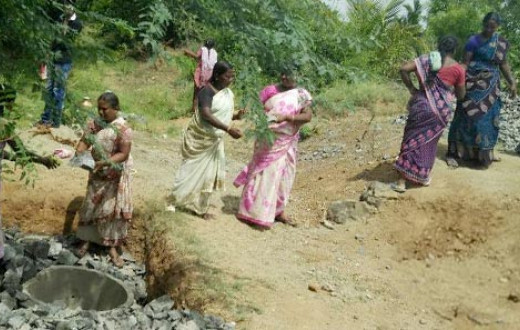Dr. Yale is hopeful even though the long-term results will come trickling in
Dr. Lingaraju Yale looks up from his laptop with some trace of weariness and yet with some sign of hope. The summer ahead is the cause for first and initial results from his work over the last four years in rejuvenating three major river sources - Kumudavathi, Vedavathi, and Palar -in Karnataka. However, he is keeping his hopes up.
Four decades ago, as a young geologist, Dr. Yale had planned to make a career in the thriving mining business in his home state. However, today as a geo-hydrologist, he is one of the foremost experts on natural water resource management in India and leads the River Rejuvenation Project driven by the International Association for Human Values (IAHV), a sister concern of The Art of Living.
“River rejuvenation is a long-term and sustainable solution. The results come in trickles, but ensure that the past man-made errors are reversed permanently. This is the only way to deliver a long-term solution to reviving dried up rivers,” said Dr. Yale.
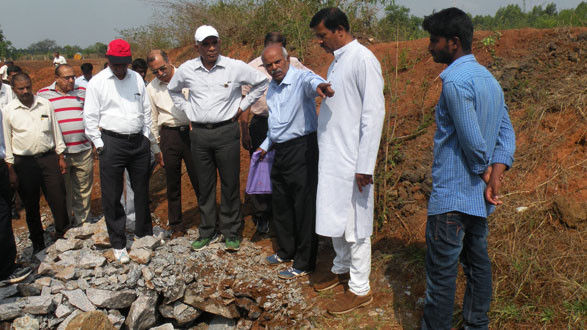
Copying nature
Critical reasons for drying of rivers
According to Dr. Yale, a study of rainfall over the last 10 decades shows that there has been little or no change in its volume or pattern (spread over geographic areas). Thus, the source of rivers continues to be more or less what it has been over the last 50-60 years, and the real damage has primarily been man-made.
- Degradation of natural vegetation in the mountains, valleys, and plains,
- Over-exploitation of groundwater,
- Soil erosion
- Massive plantation of exotic trees (that consume more water than they retain in the ground)
The drying of rivers led to an epidemic level of farmer suicides across the country.
The western state of Maharashtra accounted for over 90% of the 2000-odd suicides in 2015 in the country.
Since mid-2013, Dr. Yale and his team of 20-odd full-time volunteers and a few hundred part-time volunteers across four states in India have initiated their work in rejuvenating 27 rivers in Maharashtra (22), Karnataka (3), and one each in Tamil Nadu and Kerala. What Dr. Yale and his team are trying do is, in a sense seminal, the fruition of which is likely to show up in rest of India.
“Traditional methods of artificially pumping water into river sources or large scale afforestation to help retention of rainwater in the hills and plains don’t really work towards long-term resolution of droughts in the country,” said Dr. Yale.
“What most people don’t understand is that a river is a system and mountains are its banks. What we are now trying to do is copy nature itself, which is the best way to rejuvenate our rivers,” he added.
“Copying nature” essentially means allowing nature to convert dried or semi-perennial rivers into permanent ones.
And kindness to nature to rewarded. Ask the farmers living near these rivers. Dayanand, a small farmer in Kalaspur village in Maharashtra, shares,“In the last eight years, there was no water. Farming was dependent only on rains. Hence, we managed only one crop a year. Now, water is available throughout the year, and I grow three crops a year. My annual income has also grown 10 times to Rs 3 lakh now from Rs 30,000-40,000 earlier.”
The revival of streams in Ramegaon, Maharashtra, along with more efficient agricultural practices, has allowed farmers to increase the number of crops in a season too.
Hope yields work
Back in May 2013, Dr. Yale presented his first comprehensive report on the revival of Kumudvathi river in Karnataka which is a primary source of water for Bengaluru. Leaning on his extensive experience working with Indian Space Research Organisation’s Natural Resources Information for Management of Natural Resources, Dr. Yale, and his team laid out a comprehensive approach to the revival of the river using a three-pronged approach:
- Erosion control measure (using boulders to decelerate the speed of river flow): This prevents soil erosion, creates and retains soil moisture by supporting natural vegetation.
- Groundwater recharge (using recharge wells and borewells): Helps in raising the water table by allowing the vertical flow of the river and becomes one more water source for humans and cattle.
- Rejuvenating water bodies (step wells, tanks, and massive afforestation): this prevents soil erosion, accelerates water infiltration and enhances water retention through capillary action.
More hands join in
Recognition of the environmental impact:
- President's Award for Innovative Project
- 'Best CSR' project from NHRD
- Finalists for FICCI Water Award 2016
- Finalists for MGNREGA Awards by Ministry of Rural Development, Government of India
Unlike in the past, state governments have started showing great interest in adopting Dr. Yale’s long-term river rejuvenation plans. “Rivers being a holistic system in itself cannot be dealt in silos. Water, forest, mining and other departments have to work as one and not with isolated action plan or targets,” he explained.
The efforts in reviving the rivers have also found support from the central government. 1,000 locals working on the revival of Kumudvathi river basin are now direct beneficiaries of the Mahatma Gandhi National Rural Employment Guarantee Act.
Story credit: The documentation team, Art of Living Bureau of Communication
Published on: July 13, 2017

